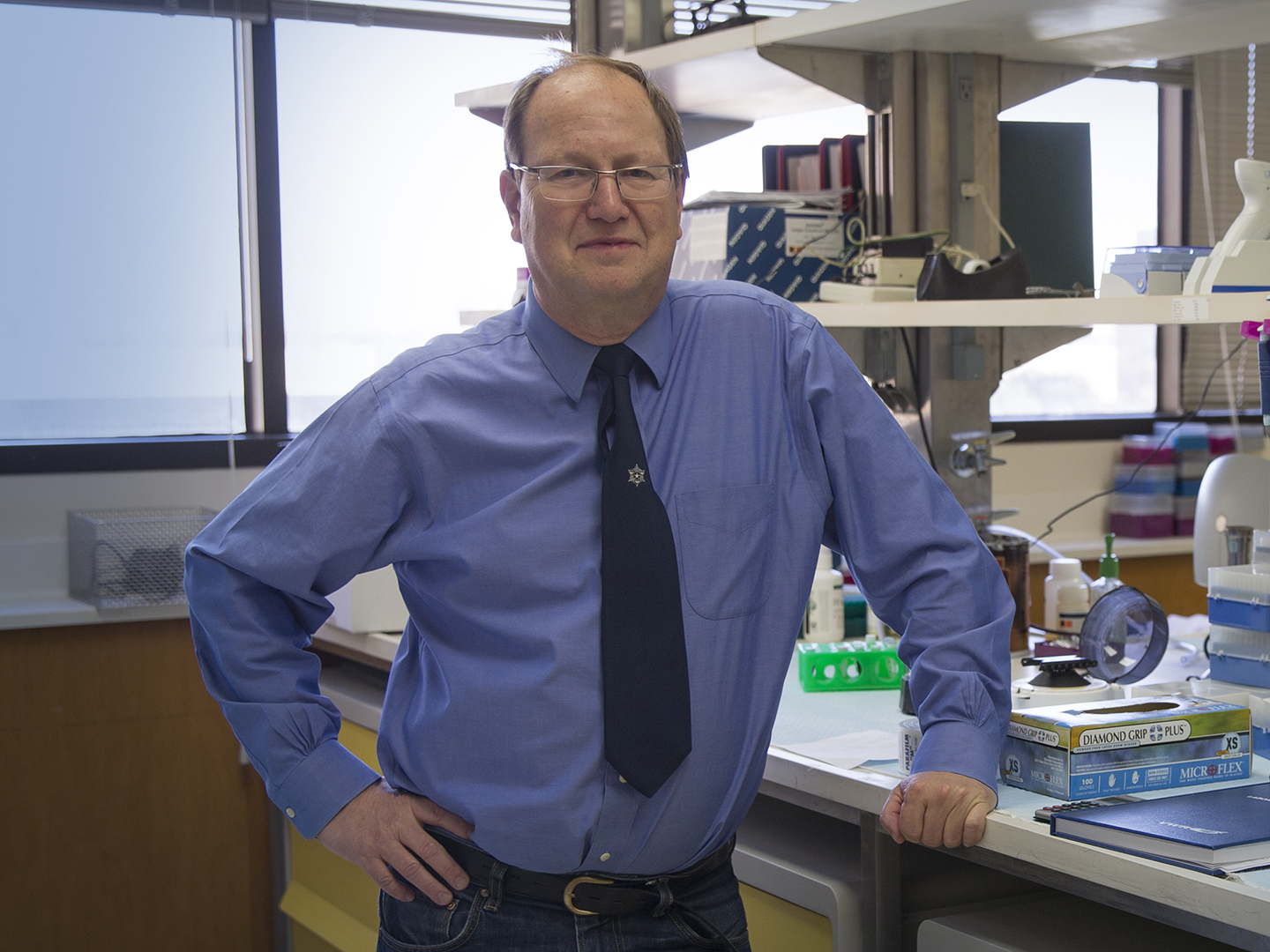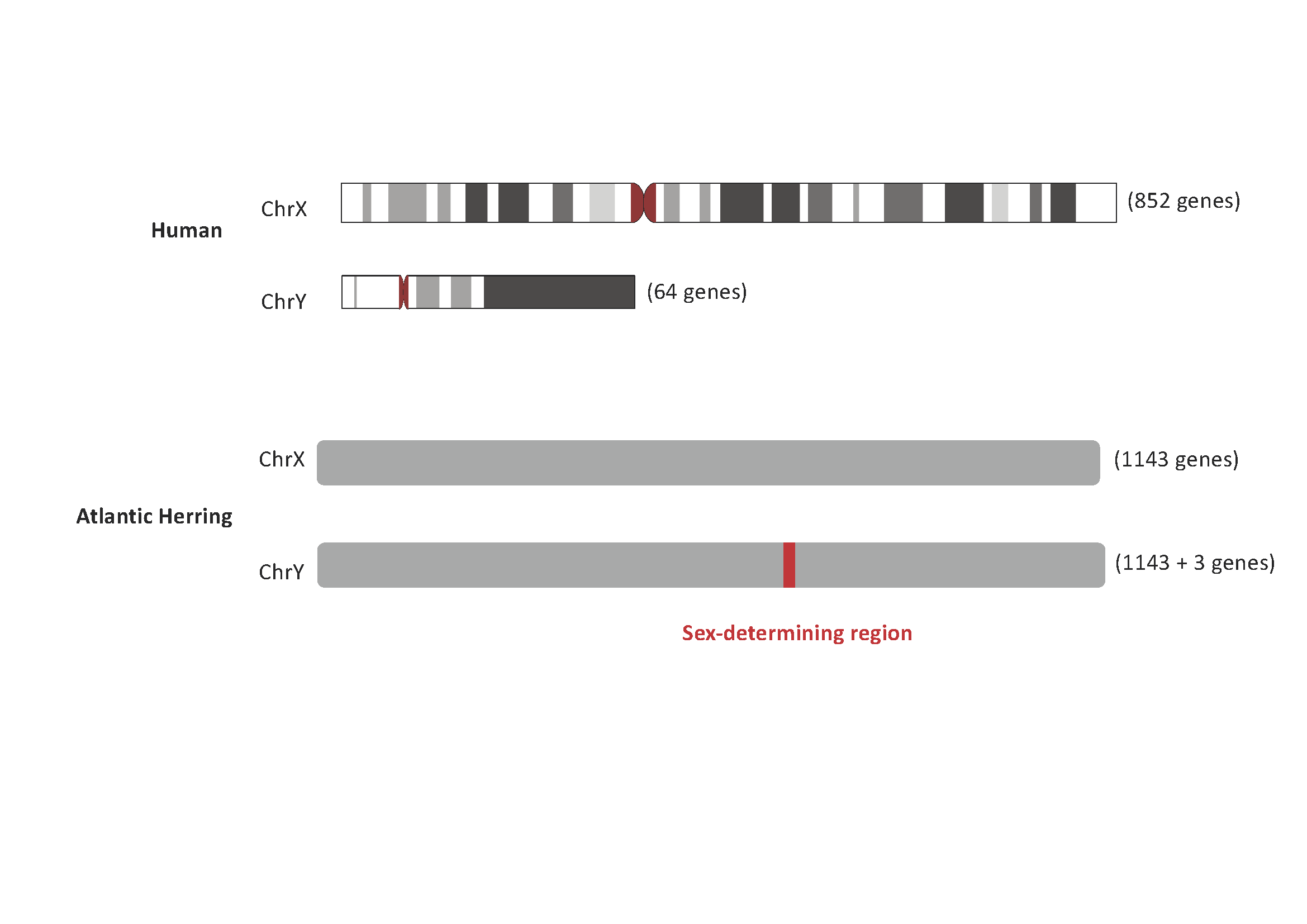Texas A&M Researcher Sheds Light On Genetic Mechanisms Of Sex Determination
Story by Margaret Preigh, CVMBS Communications

An international team of researchers led by Leif Andersson, a professor at the Texas A&M College of Veterinary Medicine & Biomedical Sciences (CVMBS), has been able to reconstruct the origins of the male sex chromosome in the Atlantic herring, determining that the male-specific region of this genetic storehouse contains only three genes: a sex-determining factor and two genes for sperm proteins.
This research provides further insight into how organisms develop into one sex or another and how the mechanisms for these developmental decisions are controlled genetically.
Chromosomes are structures of highly organized DNA that serve as one book in an organism’s biological library, or genome. Sex chromosomes specifically play an important role in determining whether an organism develops as male or female. The study of these structures is important as it allows us to understand the mechanism of sex-determination in development.
However, this research can be difficult as sex chromosomes degenerate quickly and have high rates of mutations. The Atlantic herring is unique in that both versions of its sex chromosomes (X and Y) are almost identical in gene content.
In a recent study published in PNAS, Andersson and his colleagues, based at Uppsala University in Sweden, determined that the only difference between X and Y was that the Y chromosome, found only in males, has three additional genes: a sex-determining factor (BMPR1BBY) and two sperm protein genes predicted to be essential for male fertility.
By observing the structure of these three genes in the Y chromosome, the researchers were able to trace the molecular evolutionary path that led to the Atlantic herring’s current Y chromosome, reconstructing its birth in a piecewise fashion.
“This study is unique because we have been able to reconstruct the birth of a sex chromosome,” Andersson said. “Usually, sex chromosomes evolved a long time ago, like for human Y, and many changes have occurred that make it impossible to sort out the first critical steps. That is exactly what we have done in the herring.”

Researchers determined that two of these genes were introduced when extra copies were translocated, or moved from one location to another, to what became a male-specific region that cannot exchange genetic material with the X chromosome, the sex chromosome found in both males and females. The third gene was then introduced to this same region lost from the X chromosome.
The version of BMPR1BBY that researchers identified as a sex-determining factor contains about 50 mutations from the copy found on non-sex, or autosomal, chromosomes that do not act as sex-determining factors. One function of this gene is to promote testis development and the version found on sex chromosomes has evolved the ability to act independently of some of the cofactors needed by the autosomal copies. This provides a shortcut to testes development in the sex-determining version.
“This finding shows how a genetic variant can occur and affect the molecular machinery determining sex and drive the process in one direction, male or female,” Andersson said.
The group next hopes to pursue a follow-up of this research that investigates the Sprat genome, a close relative of the Atlantic herring. This work would allow the researchers to validate their previous findings and make a more precise estimate of when this Y chromosome evolved, how stable it is, and how quickly it evolves.
“This planned research will give insight how stable a newborn sex chromosome is,” Andersson said. “Has it evolved in parallel in the two species, and if so, has evolution taken different paths? Or, has this mechanism been lost during the 5 million years or so when herring and sprat shared a common ancestor that must have had a more primitive form of this sex chromosome?”
The study was supported by the Knut and Alice Wallenberg Foundation, Vetenskapsrådet, Research Council of Norway project 254774, GENSINC, and AquaCRISPR (ANR-16-COFA-0004-01) (to A.H.). It can be found at www.pnas.org/cgi/doi/10.1073/pnas.2009925117.
###
For more information about the Texas A&M College of Veterinary Medicine & Biomedical Sciences, please visit our website at vetmed.tamu.edu or join us on Facebook, Instagram, and Twitter.
Contact Information: Jennifer Gauntt, Director of CVM Communications, Texas A&M College of Veterinary Medicine & Biomedical Sciences; jgauntt@cvm.tamu.edu; 979-862-4216


